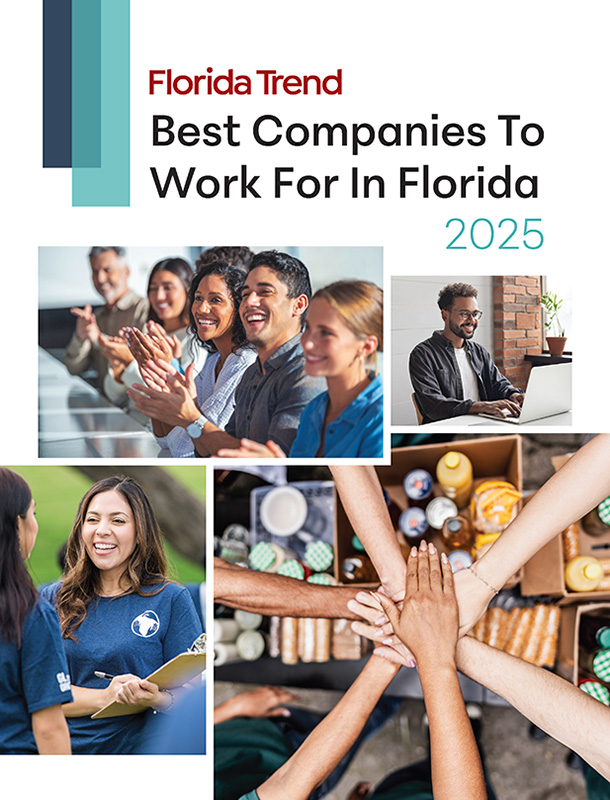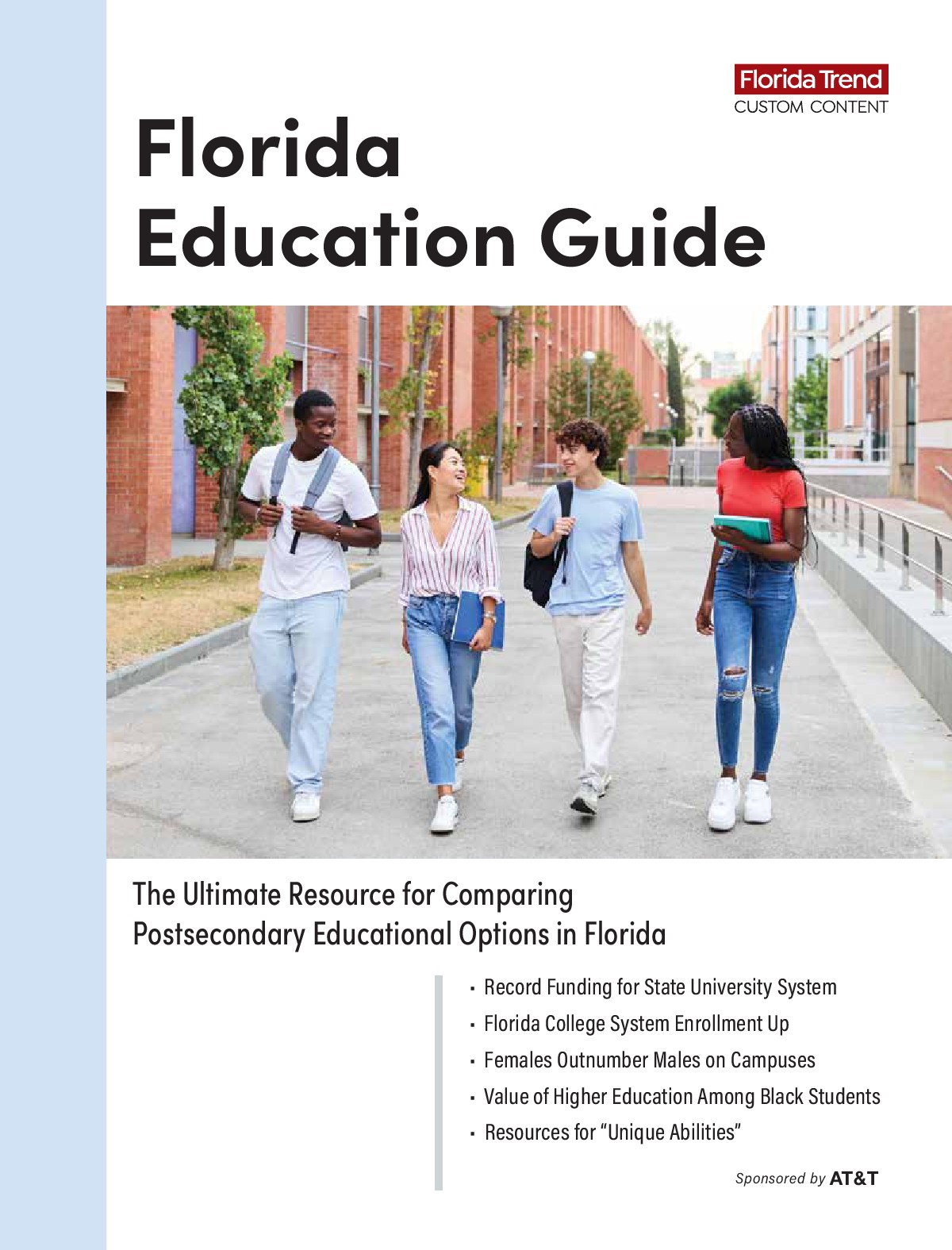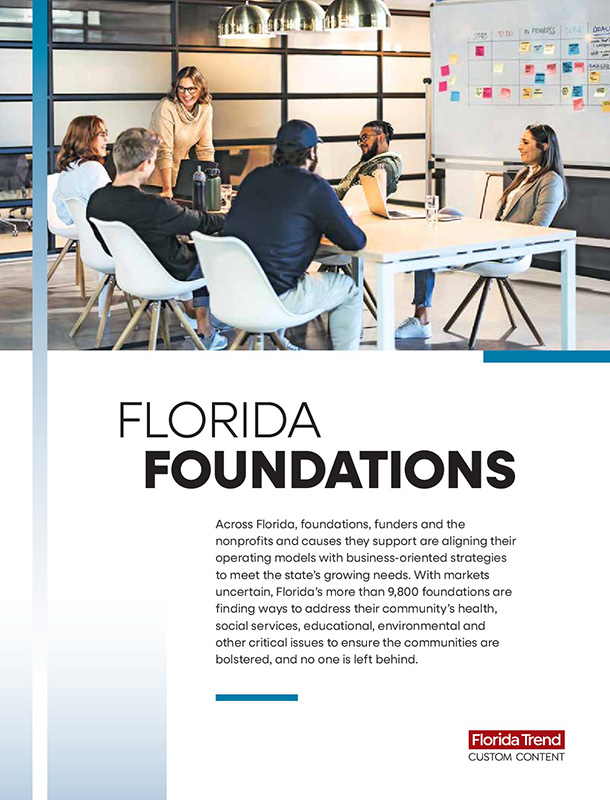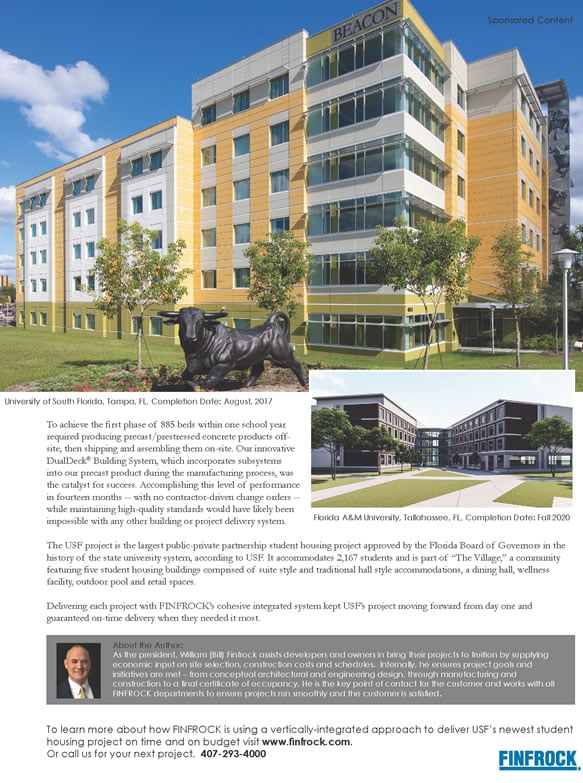The state’s universities have incentives to have students finish their degrees in four years.
Once upon a time, Florida’s public universities weren’t overly concerned if students took longer than four years to graduate with a bachelor’s degree — national rankings typically use only the six-year graduation rate in assessing schools’ effectiveness.
The schools also didn’t worry too much about dropouts — they maintained advisers to counsel students, but the counselors weren’t proactive; the students had to seek them out. As a result, many students didn’t do well academically in their freshman years — typically the toughest — and thousands didn’t return for their second years.
But for the past five years, under Marshall Criser III, chancellor of the State University System of Florida, public universities have focused on improving both their four-year graduation rates and their retention rates. The retention rate measures the percentage of fulltime students with at least a 2.0 GPA who return for their sophomore year. The Legislature has created incentives for the schools to keep students on track — the four-year graduation rates and retention rates are two of the 10 metrics that determine whether a school qualifies for performance-based funding, which can mean tens of millions of dollars for a university.
The shift is a big change for a state system where, until 2008, higher education was funded on a head-count basis. That created an incentive to recruit students and to grow, Criser says. “The unintended consequence of funding head count was that it generated a movement toward growth of enrollment and not a movement toward success and graduation.”
The performance-funding metrics have altered the old incentives. Schools are now focused less on admitting higher numbers of students and more on making sure that students finish their degrees — quickly. Specifics vary by institution, but most schools surround students with a “success team” of advisers, who offer guidance in academics, career coaching and financial aid. Apps and predictive analytics help students map their academic journeys and track progress. Students who fall behind are red-flagged, enabling the success team to reach out in real time — by phone, email, text, on social media or a knock on the dorm door.
Proactive? Intrusive? Maybe, but treating students more like customers works, the schools say.
“We provide a success team behind every one of our students,” says Sally McRorie, provost for Florida State University, which has the state’s highest four-year graduation rate.
Universities are also bolstering their summer bridge programs, which help incoming at-risk students acclimate to campus life, and have programs to help at-risk students throughout their college years. The institutions also give micro- grants, typically $500 to $1,000, to students who encounter financial emergencies — say a root canal or expensive car repair — that could derail their financial ability to pay for classes.
The campuses also now offer in-demand classes more often so students don’t have to delay graduations. At the University of Florida, departments have to make a course available immediately if a student needs it to progress, says Provost Joseph Glover. Universities also promote summer courses. Bright Futures scholarships and Pell grants cover summer tuition, recent changes that are boosting enrollments.
Messaging campaigns — “Don’t Stop, Don’t Drop,” “Finish in Four,” “Think 15. Take 30,” “U Matter. We Care” — signal a culture change for universities and their students (and parents). “What many students are pursuing, a 120-hour degree, is designed to be completed in four,” Criser says. Without that focus, “what you saw was creep toward a sense of a lowered expectations,” he says.
For students who started in 2013 and graduated in 2017, there were still four of the 11 universities where only about one in four students graduated in four years. “That is not a chamber of commerce speech,” Criser pointed out. But in the just released 2018 data, they all improved, and the rate at two of those schools was about one in three.
Overall, the system has made a lot of progress in the past six years. Retention rates increased from 83.3% to 86.2%, and four-year graduation rates rose from 44.3% to 52.6%, nearing or exceeding the 2025 goals of 90% and 50% respectively.
University Snapshots
University of Florida
Incoming freshman: 7,228 fall 2018
Second-year retention rate: 95.2% 2017-18
Four-year graduation rate: 67.1% 2014-18
The University of Florida pioneered some of the most successful programs more than 20 years ago now used across the university system to help students earn their 120-credit hour degree in four years.
As a result of its academic mapping — which involves creating a plan of study and courses to help a student stay on track to meet all degree requirements for graduation — it’s now a policy that if a student needs a course to make progress to graduation, he or she gets a seat in that class. If there is no seat available, it is up to the dean or department chair to add more capacity or create a new section. “That is part of the culture at UF,” says Joseph Glover, provost and senior vice president for academic affairs.
UF also has been examining degree curriculums that require more than 120 credits to graduate. Are all those credits really needed for a degree? Some of its engineering programs have shaved their programs closer to the 120-credit mark.
How the programs are taught may also be a problem worth solving: “Freshman mathematics is often a barrier to student success. We have invested money into the mathematics department, and it has revamped the methods it has used to teach its freshman calculus classes,” says Glover.
University of Central Florida
Incoming freshman: 4,033 fall 2018
Second-year retention rate: 88.7% 2017-18
Four-year graduation rate: 45.7% 2014-18
“We make individual calls to students who haven’t yet registered for the fall. We learn, one by one, what the issues are that are interfering with their decision to move forward. Certainly finances are a big issue. Life happens, and they get stuck. We might help them explore private scholarships or mini-success grants to get over the hump,” says Maribeth Ehasz, vice president for student development and enrollment services.
UCF has even involved college deans in its calling campaign. “Last year, we saw that our retention rate really increased because of these calls,” Ehasz says.
After this campaign last year, retention increased greatly from where it stood near the end of the spring term, the university says. UCF spent about $57,000 in completion grants (the average grant was $640) to help students.
The school’s four-year graduation rate has also improved, “but it is a bigger reach for us. Our students have not been considering four years as the best option. They work and take 12 (credits) instead of 15 — 60% to 70% of our students work,” says Ehasz.
For them, there is a “Think 30” messaging campaign, a more robust summer class program and a planning tool, Pegasus Path, giving students a clear view of their degree progression.
Florida State University
Incoming freshman: 3,725 fall 2018
Second-year retention rate: 91.4% 2017-18
Four-year graduation rate: 71.5% 2014-18
About 150 FSU students aged out of foster care or were once homeless. For them, getting lost amid the 42,000 students at the school is a risk, but FSU’s retention programs have helped keep them on track to graduation.
“If you look at the national data of kids aged out of foster care that graduate from college, it is between 2% and 3%,” says Provost Sally McRorie. At FSU, those students “graduated at a higher level than our average student graduation rate. We really focus on them and their special needs.”
Those 150 students get what every other FSU student receives: A success team assigned to them. FSU’s summer bridge program also helps low-income students. Every summer more than 400 students participate in its bridge program.
Notably, the school has erased the graduation gap, McRorie says. “All our students are at the same rate regardless of backgrounds or that they are first generation (to attend college).”
Among the state’s public universities, FSU was No. 1 for its four-year graduation rate in 2017 and 2018, she says. “We are pretty proud of that.”
Florida Atlantic University
Incoming freshman: 3,163 fall 2018
Second-year retention rate: 80.4% 2017-18
Four-year graduation rate: 33.9% 2014-18
During freshman registration periods, FAU’s first-year academic advisers staff residence halls from 10 p.m. to 1 a.m. And at least once a week during the academic year, Advising Services staffs a wifi-enabled station at the parking garage exit, grabbing the attention of commuter students before they leave for the day and answering questions or helping them with scheduling issues.
“Go where the students are,” says Joseph Murray, assistant dean of undergraduate studies and university advising services.
Five years ago, the percentage of students returning for their second year was 65.9%; now the school is above 80%, Murray says.
The university is moving into what’s called appreciative advising, a strength-based approach for working with students created by one of FAU’s faculty. “It’s about asking the broader questions before you get into co-creating a course schedule and an academic plan,” says Murray.
“We have no students falling through the cracks now,” Murray says.
University of South Florida
Incoming freshman: 3,265 fall 2018
Second-year retention rate: 86.6% 2017-18
Four-year graduation rate: 58.6% 2014-18
At USF-Tampa, if a student falls behind, the Persistence Committee is on the case.
Started in 2016 and chaired by Tom Miller, faculty member and former vice president of student affairs, the committee of 22 people representing the cashier’s office, financial aid, academic advising, housing, the dean of students and other departments is charged with troubleshooting and problem-solving — often before the student even asks for help, thanks to technology.
Analytics can predict retention into the second fall using student survey results about their educational plans, learning strategies, financial challenges and career aspirations. That data is merged with institutionally collected data such as SAT scores, GPA, etc. Then the university uses a statistical application that gives USF a predictive model for every first-time-in-college student and the chances for success.
In addition, Civitas Learning gives USF weekly reports, identifying in real time students who may need support — after flunking a midterm, for example, or missing several classes in a row.
Another model still being tested predicts a student’s first fall grade point average, which is then compared to the student’s actual GPA. “A student who got a 2.8 may be fine, but if he or she was predicted to get a 3.8, maybe it’s not fine,” Miller says. Another model predicts the four-year graduation rate in the middle of the sophomore year. Students who aren’t predicted to graduate in four may get help through a variety of programs.
Read more in Florida Trend's June issue.
Select from the following options:
* offer valid for new subscribers only












